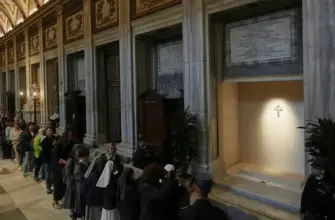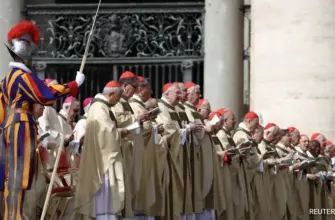Five years ago, our nation’s Christian community experienced an Easter unlike any previously known, and one that hopefully will not be repeated. This period was characterized by profound isolation, loneliness, and anxiety; however, we are now witnessing a remarkable phenomenon – the flame of faith has intensified as a result of this challenging time.
Prior to the COVID pandemic, it’s unlikely many Americans could have envisioned an Easter Sunday where congregational worship was simply impossible. Our country’s origins are rooted in a fundamental right: the freedom to practice one’s faith according to individual conscience.
Throughout Lent 2020 – coinciding with the emergence of the Chinese virus – I recall the resonant sound of Brooklyn church bells, echoing through the eerily silent urban landscape. These peals offered both consolation and a poignant reminder of restricted spiritual access, yet simultaneously conveyed a message of hope and enduring truth: that this difficult situation would eventually resolve itself.
“We have given up each other for Lent,” I wrote in an article for the New York Post at the time, “But as we awake on Sunday to the surreal reality of current circumstance, there is hope we will see each other again.”
As we celebrate the Lord’s resurrection this year, several key changes have occurred: COVID-related lockdowns are over, churches are open and full – often overflowing with worshippers – and many consider it a renewed American religious revival. This week, the New York Post published an article stating, “Young people are converting to Catholicism en masse — driven by pandemic, internet, ‘lax’ alternatives.”
According to reports from the National Catholic Register, Catholic parishes nationwide are experiencing attendance increases of 30-70%, and this growth extends beyond traditional Catholics. As I frequently encounter individuals on my travels, most Christians express a heightened sense of faith and connection.
“After all the Holy Spirit, speaking through the prophets, has told for thousands of years of periods of loss and suffering that end in the fullness of God’s light.”
Throughout history – from the banishment from Eden to the Flood, the Exodus, and Christ’s own 40 days of fasting and temptation – suffering has consistently served as a catalyst for deepening faith within the Christian community. During COVID, isolation itself became our “desert,” particularly impacting young people who were increasingly drawn to virtual experiences over tangible connection.
“At church, everything is very real, much as it has been for more than a thousand years. At church, we are never alone. At church, things can be beautiful and true and celebrated, unlike the snark-filled world of our screens that thrives on cruel jokes.”
Human beings inherently crave purpose and meaning beyond the demands of technology. We need a connection to both God and one another.
As spring returns and warms our nation, let us reflect upon our challenging COVID Easter and acknowledge that, as always, God has delivered us from suffering. This year, we anticipate reunions, embraces, and a return to a more fulfilling way of life – reminiscent of “the good old days,” or the ‘old normal’.
Perhaps most significantly, we learned through adversity not to take our faith for granted. The temporary loss underscored its preciousness.
Recently, I picked up my son from his CCD class late one evening – a tiring and frustrating experience. However, seeing him and his friends laughing and discussing God filled me with profound gratitude. “I didn’t have to be there, I got to be there,” I thought. “This wasn’t a burden, it was a blessing.”
Is America embarking on a new religious revival fueled by the lessons of COVID? While it’s premature to definitively state this, initial indicators suggest positive developments.



